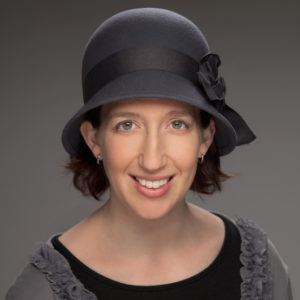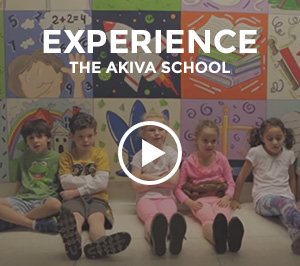 We packed a lot of Sukkot activities into our very short week. Many of our classes were able to visit our school sukkah before the rain started. They enjoyed a sweet treat of challah and honey, made the blessings on the lulav and etrog and had a little lesson with their Hebrew teachers. Rabbi Lisa Grusgow, Akiva parent and Rabbi at Temple Emanu-el, spoke to parents in the sukkah Thursday morning on Ushpizim and Ushpizot – the guests we invite into our sukkah – and we had a very enlightening and enjoyable learning session. Some of our younger students will go to the chapel Friday morning to practise Hakafot – walking around the synagogue with the Torah – for Simchat Torah, and Maharat Rachel Finegold, from the Shaar Hashomayim synagogue, will show them a Torah and all its special parts and attributes.
We packed a lot of Sukkot activities into our very short week. Many of our classes were able to visit our school sukkah before the rain started. They enjoyed a sweet treat of challah and honey, made the blessings on the lulav and etrog and had a little lesson with their Hebrew teachers. Rabbi Lisa Grusgow, Akiva parent and Rabbi at Temple Emanu-el, spoke to parents in the sukkah Thursday morning on Ushpizim and Ushpizot – the guests we invite into our sukkah – and we had a very enlightening and enjoyable learning session. Some of our younger students will go to the chapel Friday morning to practise Hakafot – walking around the synagogue with the Torah – for Simchat Torah, and Maharat Rachel Finegold, from the Shaar Hashomayim synagogue, will show them a Torah and all its special parts and attributes.
This week, I am honoured and grateful to have Maharat Rachel as our guest blogger.
Wishing everyone a Shabbat Shalom and Chag Sameach.
Debbie
 What happens the day after a peak experience? When an athlete wins the Olympic gold or takes home the Stanley cup, of course there is celebration, a chance to bask in the moment. But what happens after that? The athlete returns to the field, to the ice, or to the swimming pool, and continues to work. He or she continues the drills, the training – the hard work does not stop.
What happens the day after a peak experience? When an athlete wins the Olympic gold or takes home the Stanley cup, of course there is celebration, a chance to bask in the moment. But what happens after that? The athlete returns to the field, to the ice, or to the swimming pool, and continues to work. He or she continues the drills, the training – the hard work does not stop.
As a community, we just came through a peak religious experience. The high moments of Yom Kippur, the final sounding of the shofar at Neilah, the feeling of newness and purity that accompanies the High Holidays, still echo in our hearts days later. What does one do after Yom Kippur? The Jewish calendar has an answer: Sukkot.
The timing of this holiday seems strange, at first. If Passover is the celebration of the Exodus from Egypt, and Sukkot commemorates the booths that the Israelites used in the wilderness for forty years after that, then the holiday is misplaced on our calendar. Sukkot should be celebrated immediately following Passover! Why does it come now, in the wake of Rosh Hashanah and Yom Kippur? How can Sukkot help us move forward after the peak experiences of the High Holidays?
Sukkot marks the Jewish people’s forty-year journey toward the Promised Land, during which they lived in Sukkot, temporary booths. While Passover celebrates that redemption can happen and that change is possible, Sukkot reminds us that change does not happen overnight. Rabbi Yitz Greenberg teaches that while Passover commemorates a brave departure, Sukkot represents what happened in the days that followed. Passover commemorates a festive meal, the Seder. Sukkot, Rabbi Greenberg explains, marks “the hasty lunches and the endless gritty days of marching, pitching tents (booths) and taking them down over the course of 14,600 days… Sukkot commemorates the maturation of the Israelites, achieved not in crossing the Red Sea but in walking the long way to freedom.”
Sukkot comes in the wake of Yom Kippur to help us discover how to translate a peak experience into daily life. What happens the day after Yom Kippur? We begin again. We discover how to make lasting change in our lives, how to translate our grand hopes of the High Holidays into school and work and making lunch and driving carpool. Just as an athlete knows that not every game can be the championship, may we find motivation and meaning in the mundane moments of everyday life.
Maharat Rachel Kohl Finegold
Director of Education & Spiritual Enrichment
Congregation Shaar Hashomayim
(514) 937-9474 ext.174



